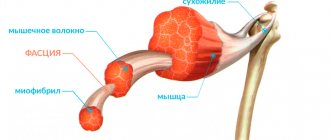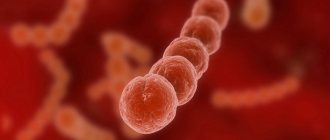Martin-Bell syndrome (Fragile X syndrome)
Children are born with increased body weight, on average 3.5-4 kg. The first to attract attention are the phenotypic characteristics of infants. Macroorchidism is characteristic - enlargement of the testicles without endocrine disease. The head circumference is greater than normal or corresponds to its upper limits. The forehead is high and wide, the face is elongated with a flattened middle part. The nose has a slightly beak-shaped bend, the ears are large and low. The joints are characterized by good mobility, the bones of the hands and feet are wide. The skin is often hyperelastic, the hair and irises of the eyes are light in color. Phenotypic characteristics can be expressed in different ways, from one or two barely detectable to a complete complex.
The key clinical manifestation of the disease is mental retardation. Persistent intellectual decline is manifested by poor development of complex forms of thinking and memory. Patients are unable to understand abstract logical statements and phenomena, use categories, or establish analogies. Comparison, analysis and generalization can be carried out at a simple level, for example, in specific everyday situations. Vocabulary is poor. Many boys have an IQ of 40-50 points, less often it reaches 70-79. Nominative speech and visual perception are relatively preserved. In girls, cognitive decline is less pronounced and corresponds to a mild degree of mental retardation or a borderline level of intellectual development.
Another typical symptom of the disease is a peculiarity of speech. It is accelerated, confusing, replete with repetitions, echolalia and perseverations. Autistic disorders include communication difficulties and behavioral disturbances. Children often become aggressive and withdrawn when trying to establish contact. In severe cases, mutism develops - a complete absence of speech as a means of communication. The behavior is dominated by motor disinhibition, hyperactivity, stereotypies, and self-harm. Patients avoid making eye contact and do not allow touching, but compared to patients with autism, there is an interest in communication. Stereotypical movements include flapping, jumping, spinning, shaking, running in circles, grimacing, and whimpering. There are difficulties in planning and controlling behavior, switching attention and spatial coordination.
Neurological symptoms are nonspecific. A slight decrease in muscle tone and motor incoordination are detected. Insufficient development of fine motor skills makes it difficult to master writing, some gaming and everyday skills (assembling construction sets, drawing, sewing, etc.). Some patients have oculomotor disorders, increased tendon reflexes, extrapyramidal parakinesis, for example, squinting of the eyes, frowning of the eyebrows, grimacing. In severe forms of the syndrome, epileptic seizures occur. 25% of patients with the premutation condition develop primary ovarian failure.
Armed with advanced scientific achievements
Patients suffering from Martin-Bell syndrome are usually distinguished by intellectual underdevelopment, characteristic speech, increased aggressiveness, and disinhibition.
Oligophrenia-like or schizophrenia-like symptoms are sometimes observed. Treatment of fragile X syndrome in Israel is based on the use of the latest achievements of world medicine. Drug therapy:
- Use of glutamine receptor antagonists mGluR5. This group of new drugs most effectively alleviates the symptoms of the disease. Currently, drugs from this group are undergoing clinical trials;
- Psychotropic drugs (psychostimulants, antidepressants, serotonin reuptake inhibitors) help combat individual deviations in the patient’s mental state;
- Lithium-based drugs show good effectiveness and improve behavioral functions, verbal memory and the ability to socially adapt;
- In Israel, an active search is underway for new drugs to combat the consequences of fragile X syndrome. For example, clinical trials have shown that some antibiotics exhibit neuroprotective properties and can alleviate the symptoms of Martin-Bell syndrome.
Non-drug therapy:
- Cognitive behavioral therapy is aimed at preventing psychological disorders and improving cognitive functions;
- Classes with a speech therapist help get rid of speech disorders;
- Genetic consultation allows you to assess the risk of the disease in families with cases of Martin-Bell syndrome.
Thanks to the use of the latest advances in pharmacology, genetics and psychotherapy, doctors at Top Ichilov Hospital help patients with fragile X syndrome to significantly improve their condition. Treatment of fragile X syndrome in Israel allows you to reduce the symptoms of the disease and return to a full life.
Typically, Martin-Bell syndrome affects males. The disease is named after Martin and Bell, the doctors who first described the disease in 1934. Martin and Bell studied a UK family in which 11 men were diagnosed with mental retardation. According to statistics, fragile X syndrome occurs once in every 1,500 newborn boys.
Manifestations in adults
Adults have similar symptoms, which include the following signs:
- appearance. Most patients with Martin-Bell syndrome have characteristic changes in appearance. The face has an elongated shape that looks like a triangle. The ears are significantly larger than the normal physical size, they have a protruding shape, which is very noticeable upon visual inspection. The forehead occupies most of the face. As for the chin, it protrudes strongly forward. The nose has a slightly rounded tip, which resembles a beak. If you look at a person from the side, the facial features have an irregular shape;
- presence of flat feet;
- severe deformation in the area of the foot and lower leg. The legs become rounded, which affects the patient’s walking;
- early signs of puberty;
- excessive obesity or, on the contrary, thinness;
- heart pathology;
- strabismus;
- bouncing in place;
- attacks of schizophrenia;
- slurred speech;
- persistent otitis media;
- rapid growth and weight gain;
- short-term memory loss;
- severe anxiety;
- change of mood;
- pathology of the reproductive system in women;
- premature menopause or menopause.
Causes of the disease
As is known, the normal human genotype is 46 chromosomes, two of which are sex chromosomes X and Y. In women, accordingly, the chromosome set will look like 46 XX, and in men - 46 XY. These carriers of genetic information consist of chains of amino acid repetitions, which contain information about the structure and functions of the future living organism. Martin-Bell disease (Fragile X syndrome) develops due to changes in the X chromosome, so it can affect both women and men. The thinning of a section of the X chromosome is caused by a pathological increase in specific repeats of amino acid residues - cytosine-guanine-guanine (C-G-G). This combination of repetitions is present several times in other genes, but it is the number of these repetitions that is important. Normally, it ranges from 29 to 31. In the case of Martin-Bell syndrome, this number is sharply increased and can occur from 230 to 4000 times, which leads to an increase in the chromosome and impaired functioning of a special gene - FMR1, which is responsible for the proper functioning and development of the nervous system. systems. The result becomes obvious a short period of time after the birth of the child and is manifested by delayed psychomotor development.
Prognosis and prevention
The genetic fragility of the X chromosome does not create major health problems if it is not complicated by pathologies of intrauterine development. Life expectancy is no different from healthy people. The prognosis for recovery is unfavorable. With adequate symptomatic treatment, psychological correction, and helping a person adapt to society, the quality of life will significantly improve, but ultimately the syndrome will lead to disability.
Prevention of the disease is perinatal examination of the fetus in the early stages. Screening of biological material will help identify a mutation in the Xq27-28 region. In this case, termination of pregnancy is recommended. A man or woman with a family history of the FMR1 mutation must undergo a test before planning a child. If an abnormality is confirmed in one of the parents, there are ways to correct the X chromosome defect at the molecular level and perform in vitro fertilization. IVF will make it possible to give birth to a baby with a healthy genetic code.
( 5 ratings, average: 3.40 out of 5)
What is the difference between mental retardation and mental retardation?
Mental retardation, or mental retardation, is associated with brain damage. The reasons for such a lesion can be very diverse, but they are always medical in nature. Social factors do not influence the development of mental retardation in any way, unlike mental retardation.
Children with mental retardation are able to keep no more than two or three objects in the focus of attention. Children with mental retardation are able to keep a larger number of objects in the focus of attention.
Their play activities also differ. Mentally retarded children experience stuckness at the stage of objective action. That is, the child learns to act with an object, to use it purposefully, but his imagination and transition to story-based games do not develop. In children with mental retardation, development stops at the stage of story-based games and does not move to the role-playing level without special training. That is, the child is already beginning to show imagination and come up with a story for his game, but his development does not allow him to move to a more complex and developed level of fantasy and interaction.
Diagnostics
Only a qualified geneticist can make a correct diagnosis based on the results of specific genetic tests and analyzes that identify the defective chromosome.
- The clinical method is a visual examination of the patient, listening to complaints, collecting anamnesis and detecting characteristic clinical signs. This method is not accurate and informative enough. Based on its results, it is impossible to make a final diagnosis.
- The cytogenetic method is the main one in diagnosing the disease. A population of cells is taken from patients and treated with folic acid, which provokes chromosomal changes. After some time, an area of pronounced thinning is revealed. This is a diagnostic criterion for the syndrome. Cytogenetic research gives accurate results only in the initial stages of pathology development. As the disease progresses, it loses its accuracy and specificity, which is associated with the use of folic acid and multivitamins containing it.
- Karyotyping is the study of a set of chromosomes. When an altered chromosome is detected, geneticists make a diagnosis.
- Molecular genetic analysis allows you to determine the number of nucleotide repeats in a gene.
- The polychain reaction is a highly specific method with which specialists study the structure of amino acids in the X chromosome and determine the presence of SMB.
- Electroencephalography makes it possible to determine similar bioelectrical brain activity in patients with the syndrome.
Prenatal diagnosis is carried out to detect pathology at the stage of intrauterine development. Non-invasive methods include ultrasound examination of the pregnant woman and screening of maternal serum blood factors. Invasive methods - umbilical cord blood testing, chorionic villus biopsy, amniocentesis, placentocentesis. If signs of the syndrome are found during the study, the woman is offered to have an abortion or leave the pregnancy, but undergo specific intrauterine treatment for the fetus.









